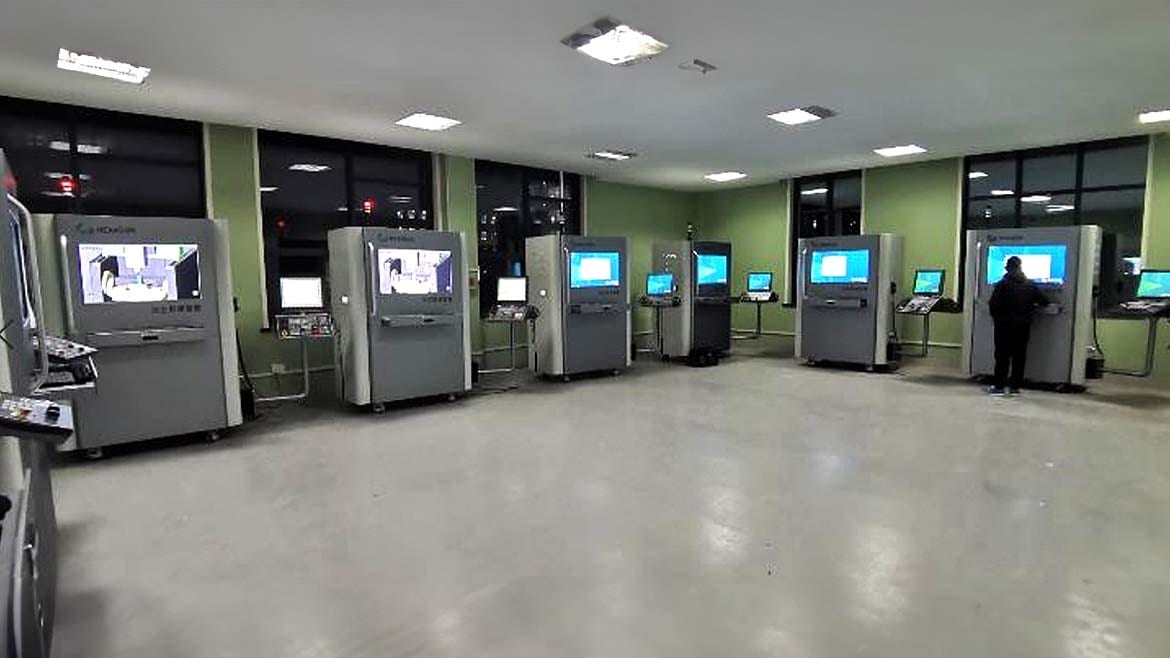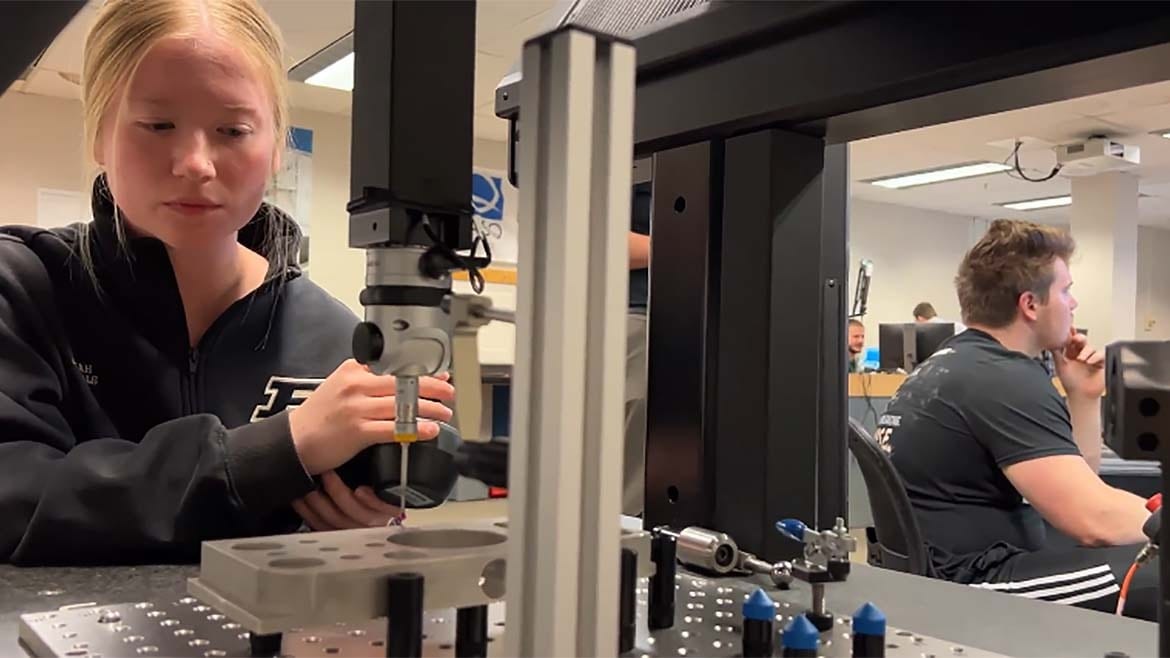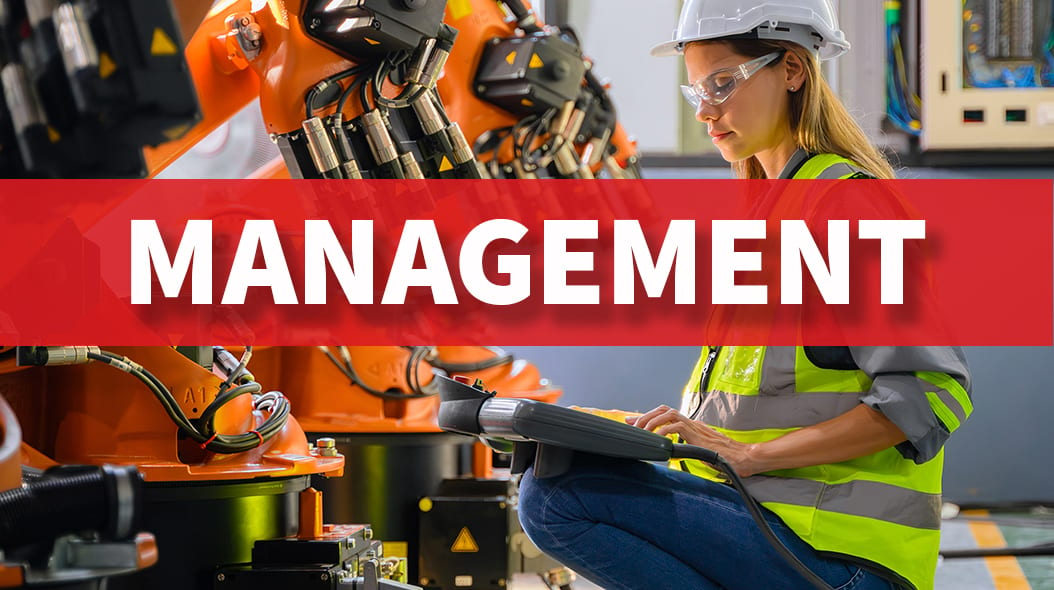H2 Deck By Bold Name
h2 xxxxxx
H1 xxxxxx
h2 xxxxx

Management
In my 30+ years working in manufacturing, I’ve seen training approaches evolve significantly. By Steve Ilmrud
Training & Upskilling at Scale: How Technology is Shaping the Future Manufacturing Workforce
Management
H2 Deck Info By Paragraph Style Bold
Headline
The manufacturing industry is grappling with a massive labor shortage, with over 600,000 job openings nationwide. As an industry, we need to take bold action to attract new talent and equip our existing workforce with the skills required by the factories of the future. The solution lies, in large part, in embracing quality candidates without a degree and providing ways for them to upskill and train on the job.
Many manufacturing positions don’t actually require a college degree, offering an attractive career path for those wary of the debt associated with higher education. For example, there are 3.06 million unemployed women who could be ideal candidates for manufacturing roles with the proper training. Upskilling will be vital to tapping into this talent pool and building our future workforce. But to really move the needle, we need to leverage technology to upskill and train at scale.
The Evolution of Training in Manufacturing
In my 30+ years working in manufacturing, I’ve seen training approaches evolve significantly. The old-school way of training was to have someone shadow an experienced employee and slowly learn on the job. This approach was time-consuming, inconsistent, and often led to quality issues and safety risks.
Now, newer technologies like digital work instructions, virtual reality, and machine simulators are transforming how we train and dramatically accelerating speed to proficiency. These tools provide a more engaging, standardized, and efficient way to train employees, reducing the time it takes to get them up to speed and minimizing the impact on production.
Digital work instructions, for example, guide operators step-by-step through complex processes with interactive visuals, videos, and built-in error-proofing. This ensures that every operator performs tasks correctly and consistently, regardless of their experience level. Virtual reality training takes this a step further, fully immersing the trainee in a simulated work environment where they can practice and master skills without any real-world consequences.
The Power of Machine Simulators
Machine simulators are another game-changer, allowing a new employee to learn to operate complex machines and even make mistakes, all in a realistic virtual environment. This substantially reduces training time and mitigates risks to the operator, equipment, and materials. The employee can then transition to the real machine with a strong foundation of skills and confidence.
These simulators are particularly valuable for training on high-tech, expensive equipment like CNC machines. In the past, an employee might have to train on a real machine, tying up valuable production capacity and risking costly errors. With a simulator, they can learn at their own pace without impacting production or safety. Some machine simulators can also use AI to simulate multiple types of CNC and CMM machine interfaces. The employee can get up to speed faster using just one virtual trainer.
Simulators also facilitate more advanced training scenarios, like troubleshooting machine issues or optimizing setups for new parts. By learning how to handle these challenges in a risk-free virtual environment, operators are better prepared to deal with real-world curveballs and keep production running smoothly.

Hexagon’s Machine Trainer for CNC and CMM
AI-Powered Workforce Optimization
These advanced training technologies become even more powerful when paired with enterprise-wide planning tools. We use an AI-based system that keeps track of every employee’s skills and training record. It understands the labor hours required for each job and optimizes scheduling based on factors like cross-training needs, capacity constraints, and employee availability.
This gives us a real-time, holistic view of our workforce capabilities and helps us dynamically assign the right people to the right roles to maximize output while simultaneously upskilling employees. If there’s a supply chain delay in one area, the system can seamlessly redeploy cross-trained workers to another production line to keep things moving.
The AI also identifies skill gaps and proactively recommends training for individual employees based on production needs and their career goals. This targeted, personalized approach to upskilling keeps our workforce agile and our employees engaged.
And the benefits have been enormous. Last year alone, this AI-powered approach helped us boost manufacturing efficiency by 73% while cutting lead times in half. Just as importantly, our employees find this cross-training makes their jobs more engaging and opens up advancement opportunities. It’s been a true win-win.

Purdue University gives students hands on experience with industry standard machines
Engaging the Next Generation
As an industry, we also need to reach the next generation of talent much earlier. To get high school and college students excited about manufacturing careers, they need hands-on experience with the cutting-edge technologies used in modern factories.
At Hexagon, we’ve partnered with several universities and even some high schools, providing millions of dollars’ worth of our metrology solutions for students to learn with. We also offer internships and participate in local job fairs for elementary through high school students, aiming to change outdated perceptions about manufacturing jobs.
Through these efforts, we’re not only helping to equip students with marketable skills but building a pipeline of future talent for our company and our customers. When young people see the advanced technologies and clean, stimulating work environments in today’s factories, they start to view manufacturing as an appealing career option.
Getting students engaged early is crucial. By the time they reach high school, many have already started to form career aspirations — so if manufacturing isn’t on their radar, we’ve already lost them. That’s why outreach efforts need to begin in middle school or even earlier, planting the seeds of interest we can cultivate over time through ongoing engagement and hands-on learning opportunities.
Partnering for Success
Ultimately, tackling the manufacturing skills gap will require an all-hands-on-deck effort, with the industry, educators, nonprofits and government working together. However, individual companies can make a huge impact by leveraging training technology to upskill at scale and forging partnerships to engage the next generation.
For example, we’ve collaborated with local community colleges to develop curricula that align with the skills we need. We provide input on course content, donate equipment for hands-on learning, and offer job opportunities to graduates. These partnerships create a virtuous cycle, ensuring a steady stream of qualified candidates for our open roles.
We’ve also worked with industry associations and the Manufacturing Extension Partnership (MEP) to promote best practices for training and workforce development. Through open sharing of successes and collaborative learning, we can elevate the entire industry.
There’s also an opportunity for manufacturing companies to partner more closely with each other on training initiatives. While we may compete for customers, we all face the same workforce challenges. By pooling expertise and resources, we can develop more effective, scalable solutions that benefit everyone. That could include creating shared online training content, co-investing in advanced training technologies, or establishing industry-wide apprenticeship programs.
The Importance of Continuous Training
No matter how busy production gets, we can’t afford to neglect training. It must be a constant priority. Organizations that embrace technology-enabled upskilling will build the agile, dynamic workforces needed to thrive in the future of manufacturing. Falling behind in innovation will leave us vulnerable in the global race for talent and market share. The decision is in our hands.
At our company, training is a core part of our culture. We celebrate employees who develop new skills and take on new roles. We invest in the latest training technologies and continuously measure their impact on our business. And we never stop looking for ways to improve.
This commitment to continuous improvement is essential because the pace of technological change is only accelerating. The cutting-edge skills today will be table stakes tomorrow. Invest in continuously empowering our employees with the latest skills through microlearning platforms and personalized learning pathways informed by skills gap analysis. This will ensure we stay ahead of the curve.
Immeasurable Rewards
The manufacturing skills gap is a daunting challenge but also an incredible opportunity. By leveraging technology to upskill at scale, engaging the next generation, and partnering for success, we can build a thriving, future-ready manufacturing workforce.
It won’t be easy, but the rewards — for our companies, our employees, and our communities — will be immeasurable. Let’s seize this moment and lead the way in training and upskilling. The future of manufacturing depends on it.
All Images Source: Source: Hexagon
Steve Ilmrud is vice president at Hexagon Manufacturing Intelligence, Inc.
READ MORE:
- https://www.qualitymag.com/articles/98069-how-to-manage-security-compliance-and-best-practices-in-the-automation-age
- https://www.qualitymag.com/articles/98068-augmenting-your-workforce-three-opportunities-to-leverage-technology-to-automate-repetitive-tasks
- https://www.qualitymag.com/articles/98063-quality-training-advancements-methods-and-trends
